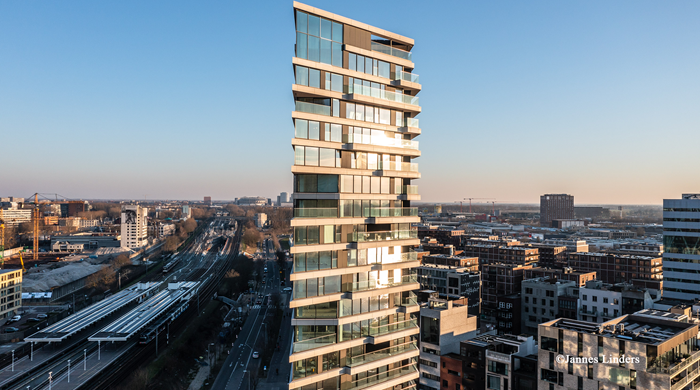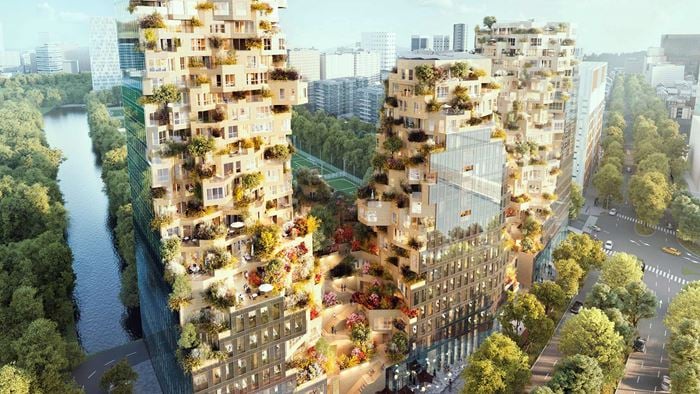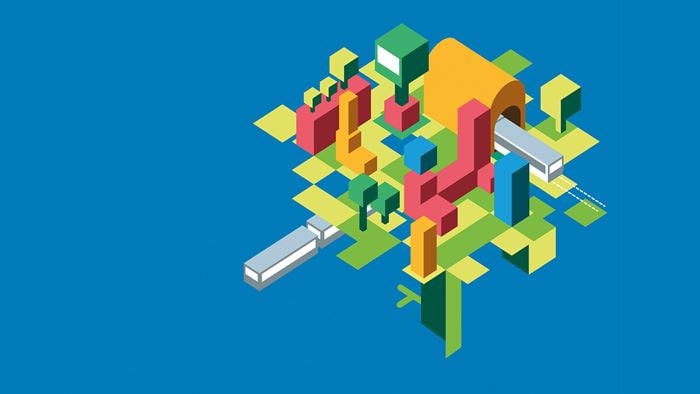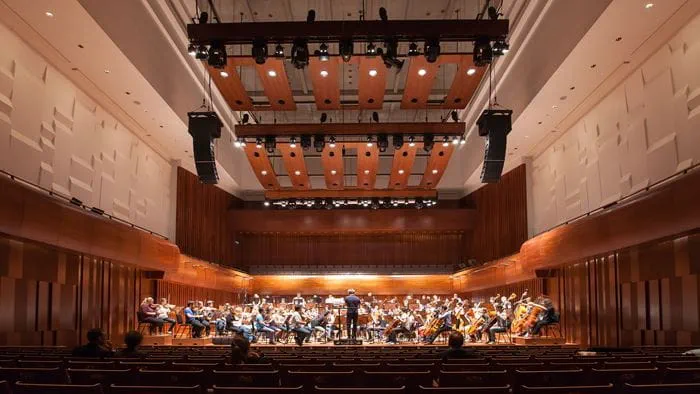The previously unloved downtown area of Smakkelaarsveld, next to Utrecht’s central railway station, will soon be redeveloped into a green area and residential complex, turning this abandoned tract of land connecting the station to the old town into a destination on its own right.
A busy in-and-out transit area, blighted by construction sites, the neighbourhood will be redeveloped by a leading consortium including Lingotto, Studioninedots, ZUS, VKZ and Arup, who are working alongside the Utrecht city council to deliver this transformative project. Upon completion, the Smakkelaarsveld area will be renamed ‘Smakkelaarspark’.
An example of how digital tools can help deliver unique, sustainable solutions to challenging problems, the consortium’s winning bid was based on parametric design methodology, which uses algorithms to optimise the scheme design against multiple KPIs, including sustainability and environmental objectives.
Lingotto's decision to team up with Arup in this tender was based on the collaboration on the successful project HAUT (timber residential high-rise), which is designed around high sustainability objectives.
The development will be centred around a new green space, surrounded by residential blocks, offices and parking; together with the extension of the Leidsche Rijn canal to restore the waterway connection for boats between the city centre and the Merwede canal in the city’s Munt area. A soon-to-be-operational light rail connection will also run beneath the entire site.
Project Summary
20,000m2 total area
50%PV generated energy for buildings
Digital design edge: improving quality using parametric design
Building on reclaimed land next to a railway poses a challenging environment: with a bus tramway lane traversing the site, together with the waterway connection, as well as the profusion of cables overhead and pipes underground. The winning bid, based on innovative parametric design methodology, would help the design process by using algorithms to optimise the scheme design.
Our parametric design approach involved defining multiple KPIs for the residential buildings including sunlight, noise, residents’ views, energy use; and then developing interrelated algorithms to codify the KPI requirements; and optimising the design in Grasshopper by running millions of design options to find the optimal solution. This allowed us to develop optimal two-sided orientation of the apartments. In using computational design we maximised the amount of sunlight exposure and optimised the views over Utrecht’s landmark church tower the Dom. By providing a view of the park from the apartments also enhances social safety.
Sustainability: Solar energy harvesting
Sustainability: Solar energy harvesting
Our contribution to the design of the residential development includes protecting the apartments against noise from the tracks, optimising the hours of sun exposure and making the most of the views of the Dom.
The area has also been designed to be energy-neutral and promote well-being, thanks to the mix of real estate with multifunctional green spaces. Sun exposure was a critical design factor, determining the optimal orientation of the photovoltaic panels on the roofs and façades, with more than 50% of the buildings’ energy expected to be generated sustainably. The building mass is south-facing in order to maximise sunlight and heat harvesting during the winter months, whilst automatic sun protection in summer keeps the heat outside. Greywater from the homes will be reused as rinse water for plumbing in the public functions.
Downtown's new go to area
The development aims to make Smakkelaarspark a destination in itself, with a variety of amenities servicing commuters, from buses, trains, trams, boats as well as cyclists. It will become a new landing spot for people to meet and relax.
Office workers, city visitors, travellers and residents will benefit from spaces that create a diverse but integrated environment. The new hybrid between green, water, man and nature creates an urban ecosystem that is resilient, diverse and sustainable. At the centre, visitors will meet Smakkelaarspark - an icon of urban development that plays an important role of connecting the small-scale inner city and the large-scale quarters.
The light rail connection is in place and soon to be operational. Another factor of the winning design was the use of a permanent crash deck, which gives the opportunity to phase the building of the complex, while the light rail remains operational. This was vital for the structural design of the whole site.

The three identities
The real estate plan includes a differentiated home mix to suit different users, offering a combination of green living with a central location and easily accessible services. The development includes the creation of three buildings, each catering to a specific target group to meet their needs: the Port building, the Park building and the Quay building.
The Port building consists of rental compact properties designed for a new generation of city dwellers. The Park building consists of exclusive apartments and penthouses with panoramic views of the park and the city. Finally, the Quay building is an adaptable live-work space designed to respond to several possible user groups.

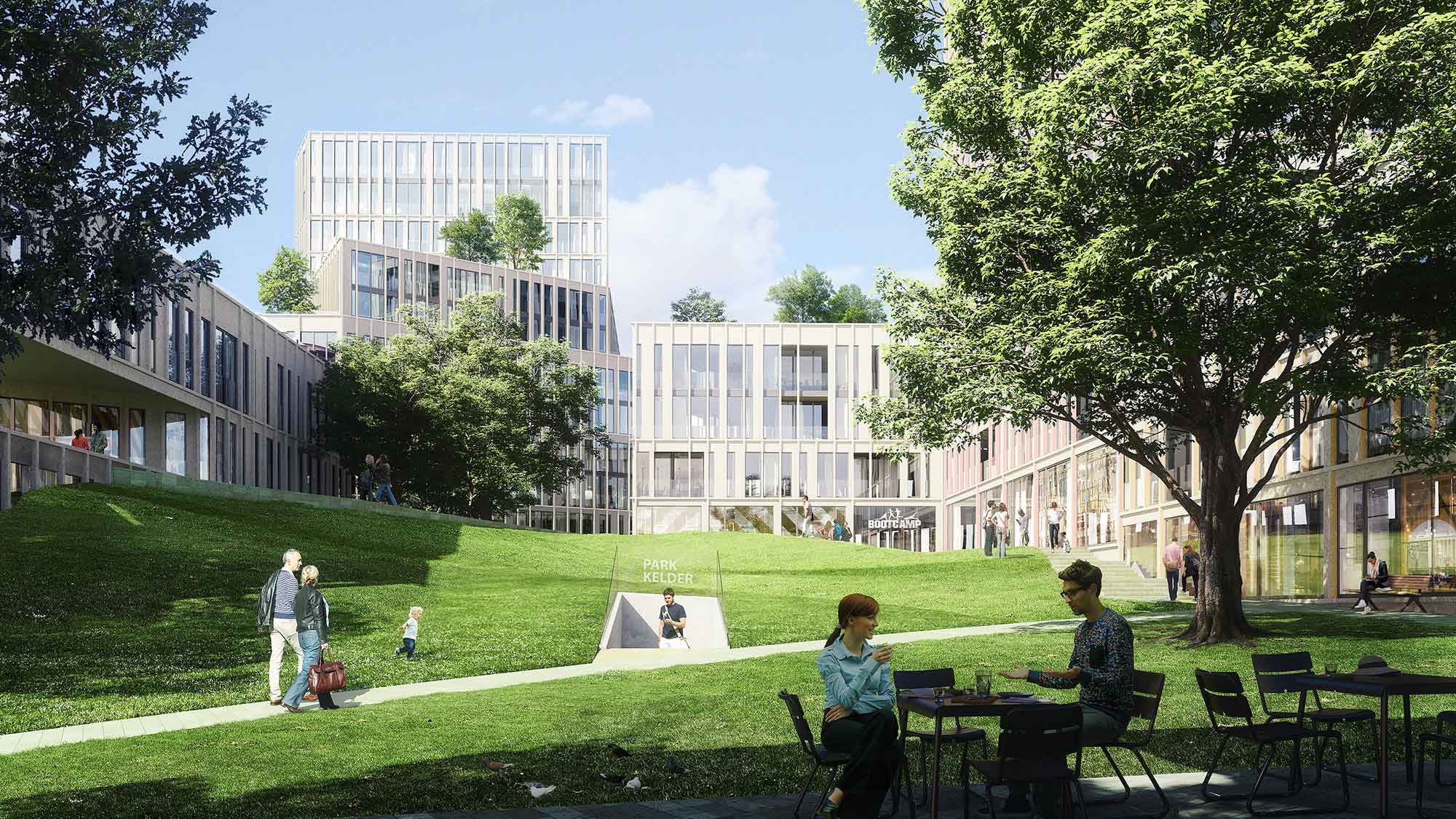 ;
;




